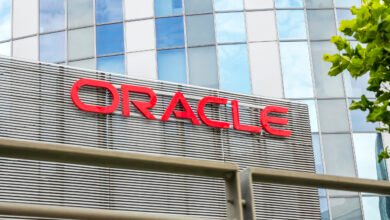Brand Bias in Search & AI: Insights From Stephen Kenwright

▼ Summary
– Google’s brand bias is long-standing, driven by user trust in familiar brands, as highlighted by Stephen Kenwright since 2016.
– Traditional marketing, like TV ads, significantly boosts search behavior, increasing branded clicks by 33% and improving conversions.
– SEO professionals should align with brand-building activities to secure larger budgets and executive support, shifting focus from technical optimizations.
– Search engine optimization must account for platform fragmentation, with users spread across Google, Bing, YouTube, and niche platforms like Autotrader.
– LLM optimization reinforces traditional marketing principles, relying on brand trust and audience needs rather than requiring entirely new strategies.
The power of brand recognition in search results remains one of the most enduring truths in digital marketing, yet many still underestimate its influence. Stephen Kenwright, founder of Rise at Seven, has long championed the idea that brand bias shapes user behavior far more than technical SEO tricks ever could. His insights reveal how traditional marketing channels continue to drive search performance in ways that algorithms inherently reward.
Google’s preference for established brands isn’t accidental, it’s a reflection of user trust. People don’t just search for answers; they look for familiar names that simplify decision-making. When a brand appears in TV ads, billboards, or PR campaigns, it creates mental shortcuts that translate directly into search behavior. Studies show that viewers exposed to television ads are 33% more likely to click on that brand’s search results, proving that offline visibility fuels online success.
Despite this, many SEO professionals historically overlooked brand-building in favor of tactical optimizations. Kenwright argues this mindset has cost the industry opportunities for bigger budgets and executive buy-in. By aligning SEO with broader marketing goals, like PR and social media, brands can secure higher visibility while gaining internal support. “It’s not about exact-match domains ranking first,” he explains. “It’s about creating real-world trust that Google can’t ignore.”
Search behavior is also fragmenting across platforms, with Bing, Quora, Pinterest, and YouTube capturing significant user attention. Specialized engines like Autotrader and Amazon dominate niche searches, forcing brands to rethink where they invest optimization efforts. Yet Kenwright believes Google’s dominance isn’t fading anytime soon, and the same principles that work today will apply to emerging AI-driven search models.
Large language models (LLMs) may change how answers are delivered, but not what makes a brand authoritative. Early trends suggest that trust signals, real-world engagement, and consistent branding will remain critical. “What works for Google now is just good marketing,” Kenwright notes. “That won’t change with AI.”
When asked how he’d launch a new brand today, his answer was telling: millions in TV advertising, paired with PR and a solid ecommerce site. It’s a strategy that harks back to pre-digital dominance, proving that classic marketing principles still drive the most effective results.
The lesson? Technical optimizations alone won’t sustain visibility. Brands that invest in recognition, across TV, social, PR, and search, will outperform those fixated on algorithmic shortcuts. Whether through Google, AI, or platforms yet to emerge, trust and familiarity will always dictate success.
(Source: Search Engine Journal)




